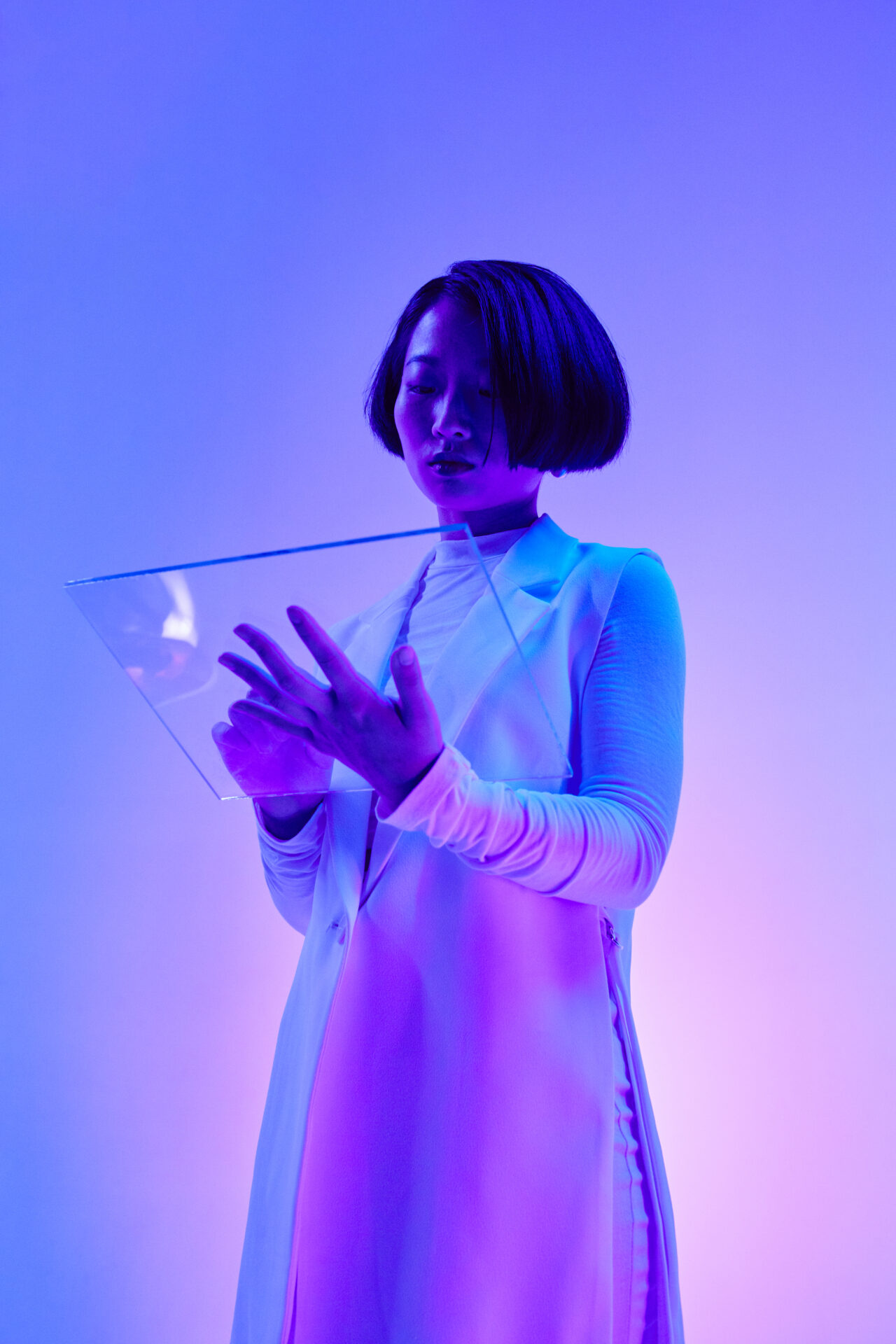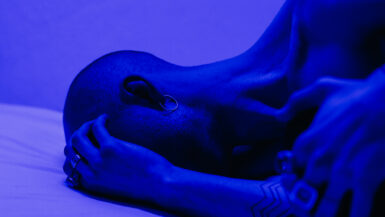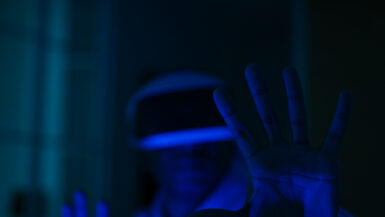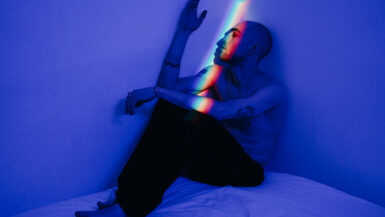In today’s fast-paced, technology-driven world, our exposure to blue light has increased exponentially, leading to potential disruptions in our sleep patterns and overall productivity. This article delves into the science behind blue light, its impact on our circadian rhythms, and the subsequent effects on sleep quality and daily performance. Furthermore, we explore the significance of reducing blue light exposure, especially during the evening hours, and offer practical strategies for achieving better sleep and enhanced productivity. Join us as we unravel the complex relationship between blue light and our well-being in this comprehensive analysis.
Establishing a Healthy Sleep Routine for Optimal Productivity
One of the most effective ways to enhance productivity is to establish a healthy sleep routine. In this section, we will explore several key strategies that can help minimize exposure to blue light and promote better sleep, leading to improved daily performance. By understanding the connection between blue light and sleep, we can make informed decisions about our nighttime habits and make a positive impact on our productivity levels.
Embracing Screen-Free Evenings
It is important to create an environment conducive to relaxation and restful sleep. One of the most significant sources of blue light exposure is our electronic devices, such as smartphones, tablets, and computers. As we have learned from the article on cultural differences in blue light exposure, people in different regions may have varying sensitivities to blue light. To reduce the harmful effects of blue light, consider setting aside the last hour or two before bedtime as a screen-free time. This can help your brain wind down and prepare for a restful night’s sleep.
Invest in Blue Light Blocking Technology
If it is not possible to completely eliminate screen time before bed, consider using blue light blocking technology. Many devices now offer built-in settings that filter out blue light, and there are also apps and screen protectors available that can help reduce exposure. Additionally, wearing blue light blocking glasses in the evening can help minimize the impact of blue light on your sleep.
Establish a Consistent Sleep Schedule
Consistency is key when it comes to sleep. Going to bed and waking up at the same time every day, even on weekends, helps regulate your body’s internal clock and can improve sleep quality. As a result, you are more likely to feel refreshed and energized upon waking, leading to increased productivity throughout the day.
Create a Relaxing Bedtime Routine
Developing a calming pre-sleep routine can signal to your body that it’s time to wind down and prepare for rest. Activities such as reading a physical book, taking a warm bath, or practicing relaxation techniques like deep breathing or meditation can help ease the transition from wakefulness to sleep. By consistently engaging in these calming activities, you are more likely to experience restorative sleep and improved productivity.
Opt for a Sleep-Friendly Environment
Finally, it is essential to create a sleep-friendly environment that promotes relaxation and minimizes disruptions. Keep your bedroom dark, cool, and quiet to facilitate a restful night’s sleep. You can also consider using blackout curtains, white noise machines, or earplugs to block out any potential disturbances.
By implementing these strategies to establish a healthy sleep routine and reduce blue light exposure, you can significantly improve your sleep quality and, in turn, boost your productivity levels. Give yourself the gift of better sleep and watch your performance soar.
Reducing Blue Light Exposure with Technology Tools
In our ever-connected world, it is becoming increasingly difficult to avoid the harmful effects of blue light on sleep. However, there are several innovative technology tools available that can aid in minimizing blue light exposure, ultimately promoting better sleep and overall health. In this subsection, we will explore some of these tools and discuss how they can be integrated into your daily routine to protect your eyes and improve sleep quality.
Smartphone and Tablet Settings
Many smartphones and tablets now come equipped with built-in settings designed to reduce blue light emissions. These settings, often referred to as “night mode” or “blue light filter,” can typically be accessed through the device’s display settings. By enabling these features, you can automatically adjust the color temperature of your screen during evening hours, reducing the amount of blue light emitted and helping to maintain your natural sleep-wake cycle.
Blue Light Blocking Applications
In addition to built-in device settings, there are several third-party applications available for download that can help to minimize blue light exposure. These apps work by applying a customizable color filter to your screen, reducing the blue light output without affecting the overall usability of your device. Some popular options include f.lux, Twilight, and Iris, all of which offer customizable settings to suit your individual needs and preferences.
Computer Software Solutions
For those who spend long hours working on laptops or desktop computers, there are software solutions available to help reduce blue light exposure. Similar to the apps mentioned above, these programs adjust the color temperature of your screen based on the time of day, helping to maintain a healthier balance of blue light exposure. Examples of such software include f.lux, Redshift, and SunsetScreen.
Blue Light Blocking Glasses
If you’re unable to avoid screens during the evening hours, blue light blocking glasses can serve as a useful tool in reducing your exposure to blue light. These glasses are designed with special lenses that filter out blue light, allowing you to continue using your electronic devices without disrupting your natural sleep patterns. Many styles and price points are available, making it easy to find a pair that suits your needs and preferences.
Monitor Screen Protectors
Another option for reducing blue light exposure is to use a screen protector specifically designed to block blue light. These screen protectors can be applied to your computer monitor, laptop, or even your smartphone or tablet, effectively filtering out a significant portion of harmful blue light emissions. This can help to reduce eye strain and fatigue while still allowing you to use your devices comfortably.
By incorporating these technology tools into your daily routine, you can proactively take control of your blue light exposure, ultimately promoting better sleep and overall health. With a mindful approach and the use of these innovative solutions, you can enjoy the benefits of technology while still protecting your eyes and preserving your natural sleep-wake cycle.
Understanding Blue Light and Its Effects on Sleep
As we delve into the significance of reducing blue light exposure for better sleep, it is crucial to first comprehend what blue light is and how it impacts our sleep patterns. In this subsection, we will explore the science behind blue light, its sources, and the ways in which it influences our circadian rhythms, ultimately affecting the quality of our sleep.
What is Blue Light and Where Does it Come From?
Blue light is a part of the visible light spectrum, characterized by its short wavelength and high energy levels. It is naturally emitted by the sun and plays a vital role in regulating our circadian rhythms, which are the internal clocks that guide our sleep-wake cycles.
However, blue light is also emitted by artificial sources such as LED lights, smartphones, tablets, computers, and televisions. With the increasing dependence on electronic devices, our exposure to blue light has risen significantly, especially during the evening hours when its effects can be most disruptive to our sleep.
The Impact of Blue Light on Circadian Rhythms
Our circadian rhythms are influenced by external cues, the most significant of which is light. Exposure to blue light during the day helps keep us alert and awake, while its absence at night allows our bodies to produce melatonin, the hormone responsible for inducing sleep.
The problem arises when we are exposed to blue light from artificial sources during the evening hours, as this can interfere with our natural sleep-wake cycles. This disruption can delay the onset of sleep, reduce sleep quality, and contribute to sleep-related problems such as insomnia.
How Blue Light Affects Sleep Quality and Overall Health
Poor sleep quality, resulting from excessive blue light exposure, can have far-reaching consequences on our overall health and well-being. In addition to feeling fatigued and less alert, chronic sleep deprivation has been linked to various health issues such as obesity, cardiovascular disease, and diabetes. Moreover, insufficient sleep can also impair cognitive function, memory, and emotional regulation, further highlighting the importance of reducing blue light exposure for better sleep.
As we gain a deeper understanding of blue light and its effects on our sleep patterns, it becomes increasingly evident that taking proactive steps to minimize exposure, especially during the evening hours, is essential for promoting restorative sleep and maintaining optimal health. By being mindful of our screen time and implementing strategies to reduce blue light exposure, we can safeguard our sleep and, in turn, enhance our overall well-being.
How Blue Light Impacts Productivity Levels
In addition to affecting sleep quality, excessive blue light exposure can have a direct impact on our productivity levels. By disrupting our circadian rhythms and impairing cognitive function, blue light can hinder our ability to perform at our best during the day. In this subsection, we will explore the various ways in which blue light exposure can influence productivity and discuss the importance of minimizing its effects for improved performance and overall well-being.
Impaired Cognitive Function and Decision-Making
Excessive blue light exposure, particularly during the evening hours, can lead to sleep deprivation, which in turn impairs cognitive function. This can manifest in various ways, such as difficulty concentrating, slower reaction times, and reduced problem-solving abilities. These cognitive impairments can significantly impact our decision-making capabilities, ultimately affecting our performance at work or in our daily lives.
Reduced Alertness and Focus
As mentioned earlier, blue light exposure during the day can help keep us alert and awake. However, overexposure to blue light from artificial sources can disrupt our natural sleep-wake cycles, leading to fatigue and reduced alertness during waking hours. This lack of focus can hinder our ability to complete tasks efficiently and maintain a high level of productivity throughout the day.
Emotional and Mood Disturbances
Chronic sleep deprivation, often resulting from excessive blue light exposure, can also have a negative impact on our emotional well-being. Poor sleep quality has been linked to increased irritability, mood swings, and even a greater susceptibility to anxiety and depression. These emotional disturbances can not only affect our personal relationships but also interfere with our ability to remain productive and engaged in our work.
The Cumulative Effect of Blue Light on Productivity
It is essential to recognize that the effects of blue light exposure on productivity are not always immediately apparent. The cumulative impact of disrupted sleep patterns, impaired cognitive function, and emotional disturbances can gradually build over time, leading to a significant decline in overall performance and well-being. By addressing the issue of blue light exposure proactively, we can minimize these detrimental effects and maintain optimal productivity levels.
As we continue to rely heavily on electronic devices in our daily lives, it becomes increasingly important to understand and mitigate the potential negative consequences of blue light exposure. By taking steps to reduce blue light exposure and prioritize healthy sleep habits, we can not only improve our sleep quality but also enhance our productivity and overall well-being. This holistic approach to managing blue light exposure will ensure that we can continue to thrive in our fast-paced, technology-driven world.
Natural Ways to Minimize Blue Light Exposure
While technology solutions can be helpful in reducing blue light exposure, it is equally important to explore natural methods that can contribute to a healthier balance of blue light in our daily lives. In this subsection, we will discuss several natural ways to minimize blue light exposure, focusing on establishing healthy habits and making conscious choices that can promote better sleep and overall well-being.
Embrace Natural Light During the Day
One of the most effective ways to counteract the negative effects of artificial blue light is to increase your exposure to natural light during daytime hours. Sunlight is the primary source of blue light, and exposing yourself to it in the morning and throughout the day can help regulate your circadian rhythm, boost mood, and increase alertness. Make an effort to spend time outdoors, open your window blinds, or work near a window to maximize your exposure to natural light.
Limit Screen Time, Especially Before Bed
To reduce your exposure to artificial blue light, be mindful of your screen time and make an effort to limit the use of electronic devices, especially in the hours leading up to bedtime. Consider setting a “technology curfew” and establish a screen-free zone in your bedroom to create an environment that promotes relaxation and restful sleep. By being conscious of your screen time habits, you can minimize blue light exposure and improve your sleep quality.
Adopt a Consistent Sleep Schedule
Creating and maintaining a consistent sleep schedule can help regulate your body’s internal clock, making it less susceptible to the disruptive effects of blue light exposure. Try to go to bed and wake up at the same time every day, even on weekends, to reinforce your natural sleep-wake cycle. A regular sleep routine can make it easier for your body to adjust to any unavoidable blue light exposure and maintain a healthy sleep pattern.
Opt for Warm Lighting in the Evening
The type of lighting used in your home can significantly impact your exposure to blue light. In the evening hours, opt for warm, dim lighting to reduce the amount of blue light emitted. Look for bulbs with a lower color temperature (around 2700K) and avoid using cool white or daylight bulbs in areas where you spend time before bed, such as the bedroom or living room. This simple change can help create a more sleep-friendly environment and minimize the impact of blue light on your sleep.
Engage in Relaxing Activities Before Bed
Incorporating relaxation techniques into your evening routine can help signal to your body that it’s time to wind down, counteracting the stimulating effects of blue light exposure. Activities such as reading a physical book, taking a warm bath, practicing gentle yoga or meditation, or engaging in other calming hobbies can help ease the transition from wakefulness to sleep. By prioritizing relaxation in the evening, you can promote better sleep and reduce the impact of blue light on your overall well-being.
By implementing these natural strategies to minimize blue light exposure, you can take a proactive approach to improving your sleep quality and maintaining a healthy balance of blue light in your daily life. These simple yet effective habits can contribute to better sleep, enhanced well-being, and ultimately, a more productive and fulfilling lifestyle.





Leave a reply